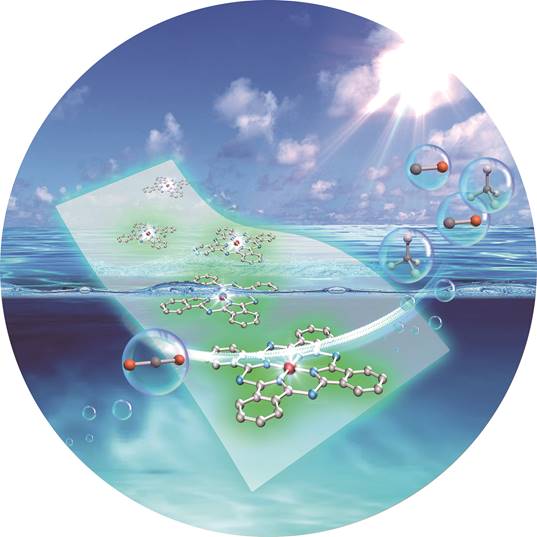Angew. Chem. Int. Ed., 2019, DOI:10.1002/anie.201905274

Ji Bian, Jiannan Feng, Ziqing Zhang, Zhijun Li, Yuhang Zhang, Yadi Liu, Sharafat Ali, Yang Qu, Linlu Bai, Jijia Xie, Dongyan Tang, Xin Li, Fuquan Bai*, Junwang Tang*, and Liqiang Jing*. Dimension-matched Zinc Phthalocyanine/BiVO4 ultrathin nanocomposites for CO2 Reduction as Efficient Wide-Visible-Light-Driven Photocatalysts via a Cascade Charge Transfer. (Angew. Chem. Int. Ed., 2019, DOI:10.1002/anie.201905274)
Herein, a novel strategy of cascade charge transfer was realised by a H-bond linked zinc phthalocyanine/BiVO4 nanosheet (ZnPc/BVNS) composite, which subsequently works as an efficient wide-visible-light-driven photocatalyst for converting CO2 to CO and CH4, proved by both products analysis and 13C isotopic measurement. The optimised ZnPc/BVNS nanocomposite exhibits ~16-fold enhancement in the quantum efficiency compared with the reported BiVO4 nanoparticles at the excitation of 520 nm with an assistance of 660 nm photons. Both experimental and theoretical results verify the exceptional activities are attributed to the rapid charge separation via a novel cascade Z-scheme charge transfer mechanism formed by the dimension-matched ultrathin (~8 nm) heterojunction nanostructure. Moreover, it is evidenced that the central Zn2+ in ZnPc could accept the excited electrons from the ligand and then provide a catalytic function for CO2 reduction. Impressively, this Z-scheme is also feasible to other MPc like FePc and CoPc together with BVNS.
